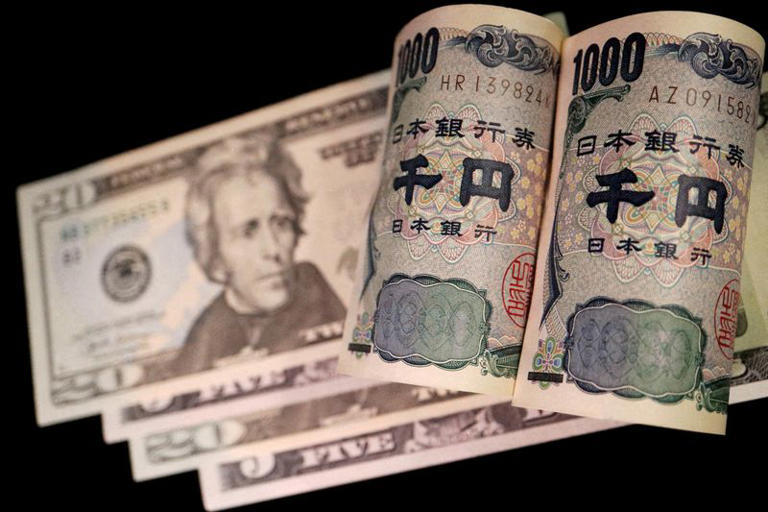On Tuesday, the Japanese yen experienced a decline against the dollar, retracing some of its significant gains from the previous day, which were sparked by suspected intervention by Japanese authorities in the currency market.
The yen weakened by 0.40% to 157.00 per dollar, although it remained above its 34-year low of 160.245 recorded on Monday. Traders attributed Monday’s rebound to yen-buying intervention by Tokyo, resulting in a notable recovery of nearly six yen.
While Japanese officials have not officially confirmed any intervention in the currency market to support the yen, market participants remained vigilant for such actions, particularly with the Federal Reserve’s monetary policy review scheduled later in the week.
Confirmation of any intervention is not expected until late May. However, some traders speculated that the yen crossing the 160-per-dollar threshold may have triggered intervention. Nonetheless, analysts suggested that Japanese authorities may not be specifically targeting particular exchange rate levels.
Despite the recent rebound, the Japanese yen remains lower than its position before the Bank of Japan’s policy announcement last week and has experienced its most significant monthly decline since January. Investors anticipate that Japanese bond yields will remain low for an extended period, while U.S. rates, comparatively higher, offer ample room for yen bears.
Garvey Padhraic, regional head of research Americas at ING, emphasized the necessity for Japanese rates to rise to address the divergence in interest rate environments. He cautioned that failure to do so could lead to significant consequences, particularly in the context of forex intervention.
The Federal Reserve commenced its two-day monetary policy meeting on Tuesday, with expectations for interest rates to be maintained at 5.25%-5.5%. Given persistent U.S. inflation, the Fed is anticipated to adopt a hawkish stance, potentially prompting further selling of the yen.
Carol Kong, a currency strategist at the Commonwealth Bank of Australia, suggested that the Ministry of Finance (MOF) in Japan might need to intervene multiple times to curb the appreciation of the dollar against the yen in response to the Fed’s anticipated message.
While the timing of potential rate hikes by the Bank of Japan remains uncertain, traders are adjusting their expectations for Fed rate cuts this year in light of robust U.S. economic data and persistent inflation. Market sentiment suggests diminishing prospects for a rate cut in September, with the likelihood dropping to 44%, according to CME Group’s FedWatch tool.
The U.S. dollar strengthened by 0.16% against a basket of currencies ahead of the Fed’s meeting, following a 0.25% decline in the previous session.
Thierry Wizman, global forex and rates strategist at Macquarie, indicated a potential shift in the Fed’s policy stance, with expectations for the start of an easing cycle pushed to 2025 from December 2024. He emphasized the possibility of a rate hike, which could trigger a wave of U.S. dollar strength.
Amid ongoing developments, major central banks such as the European Central Bank (ECB) and the Bank of England (BoE) may contemplate rate cuts, although geopolitical tensions and inflation uncertainties pose challenges to policy decisions.
In the cryptocurrency market, bitcoin experienced a slight increase, rising by 0.70% to $63,357.00.
